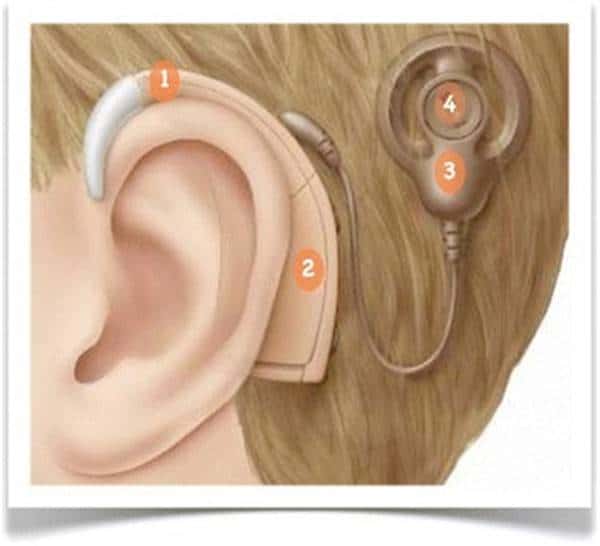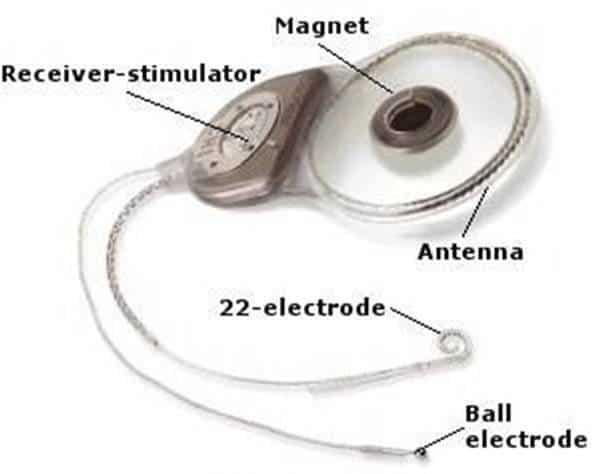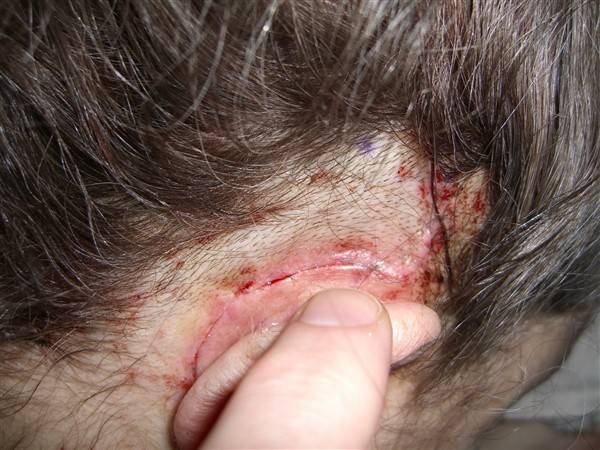People associated with the Hearing Impaired often come across the word Cochlear Implant. Majority of us are unaware of the procedures and how it works. The lack of information creates a lot of misconceptions. The truth is that Cochlear Implant surgery is totally safe. Users confirm that they hear much better with a Cochlear Implant.
It is highly recommended in cases where Hearing Aids do not benefit. This is mostly in the case of people suffering from Severe to Profound Sensorineural Hearing loss.
Table of Contents
- What is a Cochlear Implant?
- Why do we need a Cochlear Implant?
- Cochlear Implant Parts
- How Does a Cochlear Implant Work?
- Brief Description of Cochlear Implant Surgery
- Procedure after the CI Surgery
- Pros and Cons of Cochlear Implant Surgery
What Is A Cochlear Implant?
A Cochlear Implant is a high-tech listening device for people suffering from deafness due to malfunction of the Inner Ear.
The meaning of Cochlear Implant as the name suggests is, a device implanted in the Cochlea of our Ear.
Why Do We Need A Cochlear Implant?
The delicate Cochlea in the Inner Ear converts the mechanical motion into electrical signals. These signals reach the brain through the Auditory Nerve.
Due to the damage or absence of Hair Cells, the sound waves are not converted to electrical signals. Since no signal or a very weak signal reaches the brain, the person cannot hear.
A Cochlear Implant provides the missing electrical signals to the Brain through the Auditory Nerve.
Cochlear Implant Parts?
Before we read further, let us get familiar with the parts of the Cochlear Implant. For all practical purposes, the Cochlear Implant can be broadly divided into 2 parts.

The only two Cochlear Implant parts one need to know about are:
The External Unit
The external Unit consists of the following components
- Microphone.
- Sound Processor Unit in the housing
- Transmitter with Coil
- Magnet
The Internal Unit

The internal unit which is surgically implanted consists of the following components.
How Does a Cochlear Implant Work?
The Microphone of the Cochlear Implant picks up the speech signals. The speech signal is digitally processed and converted to electronic data. The wires carry the data to the transmitter which attaches externally to the Head.
The Antenna inside the scalp picks up the Digital data. The Receiver and Simulator convert this data into electrical signals and pass them on to the Electrodes. The Electrodes provide the electrical signal to the Cochlea. This signal reaches the Brain through the Auditory Nerve as Speech signals.
Read this blog to understand how cochlear implants work.
The Cochlear Implant Or Hearing Aid Debate.
If you are wondering why do Audiologists recommend a complex Hearing Device which involves surgery over an easy to fit Hearing Aid? The answer lies in the functionality of both the Hearing Devices.
The Hearing Aid amplifies the sound and feeds into our ears. The amplified sound passes through the Outer Ear, Middle Ear and on to the Inner Ear. The damaged or missing sensory Hair Cells in the Inner Ear cannot convert the sound to electrical signals. Our Brain will not receive these signals even if the person is using a Hearing Aid. A Cochlear Implant helps the person hear in cases where the Hearing Aid does not benefit.
Cochlear Implant Surgery
The Doctor and the Audiologist conduct various tests to decide if the patient meets the criterion for the Cochlear Implant. Below are a few points which decide whether the patient should receive a Cochlear Implant.
- Whether the patient is suffering from Severe or Profound Hearing loss.
- Understanding speech with a Hearing Aid is very difficult.
- The Patient’s age at the time of the Cochlear implant surgery.
- Whether the patient is deaf from birth or has become deaf later in life. If later, at what age has the patient become deaf?
- To find out the patient’s support system i.e. family, friends and schools in case of children. Continuous need for Post-operative therapy on regular basis.
Brief Description of Cochlear Implant Surgery
- Cochlear Implant surgery takes place under General Anaesthesia. The total procedure takes about 2 hours.
- Operating team refers to the MRI or a CT scan report before the surgery to determine the location of the bones.
- The Surgeon makes an incision or a cut behind the ear to insert the internal part of the Cochlear Implant. The cut is dressed and bandaged after the operation.
- Patient is shifted to the recovery room and is under observation until the anesthesia wears off. The patient is sometimes kept in the Hospital for a few days.
- Patient should take the prescribed antibiotics to prevent infection.
- Hospital discharges the Patient.
Procedure after the CI Surgery
The Cochlear Implant does not start working or is not switched on immediately after the surgery.
The wound has to heal completely before the next step. This takes about 3 to 6 weeks. The patient can resume normal activities and is not confined to the bed.

After the wound has healed, the external parts of the Cochlear Implant are connected. After checking all connections the Cochlear Implant is switched on or activated.
Pros and Cons of Cochlear Implant Surgery
Majority of People have confirmed that they hear better with a Cochlear Implant. The benefits of Cochlear Implants are:
The Pros or Advantages of Cochlear Implants
- Cochlear Implant users are able to hear sounds which were not possible with a Hearing Aid. The sound of a doorbell, telephone bell are clearly heard. The person can also hear the footsteps of people walking and the door shutting.
- Users can understand Speech better. There is less dependence on lip reading.
- People feel relaxed as there is no stress associated with the effort to lip read and catch the missing words.
- The Cochlear Implant user can easily talk on the phone.
- The person can watch television.
- It’s a boon for children as they can hear and follow the teacher at the school.
The Cons or Disadvantages of Cochlear Implants
The disadvantages or associated risks are far less than the advantages of having ones hearing restored.
- There has been a very small percentage of cases where the Cochlear Implant has not functioned. Additional surgery corrects this situation.
- It can cause infection. But the chances are very remote.
- The sound received through the Cochlear Implant is not as natural as normal speech. Cochlear Implant users who could hear earlier and have lost their hearing later, have described it as “robotic” or “mechanical”
- No upgrades for the internal part of the Cochlear Implant. The Companies manufacturing Cochlear Implants generally upgrade the external sound processors. The new Sound processors are compatible and include the latest developments in technology.
- The Cochlear Implant is more expensive than a Hearing Aid, extra care needed to avoid damage.
- It is expensive to maintain as batteries and connecting cords are expensive.
- A person using a Cochlear Implant cannot go back to using Hearing Aids.
A paper titled “Failure Rate in Pediatric Cochlear Implantation and Hearing Results Following Revision Surgery” published in 2018 of a study on 579 cases of pediatric Cochlear implantation made the following observations:
- 7% device failure rate
- 0.3% device infection rate
- 0.3% electrode extrusion rate
The advancing technology has made Cochlear Implant surgery very safe. The sound quality of the digital Cochlear Implants has improved over the years. The leading manufacturers are Cochlear, Med El and Advanced Bionics.
Read our blog on Cochlear Implant FAQs – All You Need to Know for all your queries on the topic of Cochlear Implants.
The Government of India offers free Cochlear Implants to deserving candidates. Please check the Central Government sponsored ADIP or Assistance for Disabled Persons scheme to know the the eligibility criteria.
Contact the nearest Regional Centers. (The link will take you to the website of AYJNIHSD). Click on Regional Centers and select the center from the drop down menu for more information.
